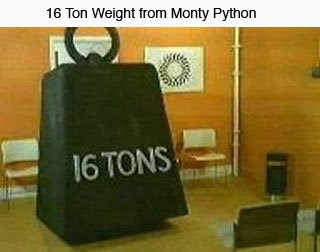
They should be. Here’s why.
A bunch of years ago, I erred in the weight load I gave to a client by a lot. Like a real lot. I remember he said “Jesus Fred – what the hell did you give me here!” Thinking the weight was correct I said “I raised the weight five pounds Jeff – geez don’t be a baby, just lift it.”
Then I looked at the load. Uh oh.
But to my surprise, he was able to complete three slow and controlled reps with the much heavier weight. I forget how many reps he completed with the much lighter weight – I think it was seven or eight. That was a real eye-opener. He was able to do a set with an amount of weight that would normally have taken me over a year to progress him to in one felled swoop.
Oops!
Well-meaning personal trainers make this mistake all the time. They will often start a client out on a given exercise using say a five pound dumbbell and after six months will have progressed them to fifteen pounds, proudly proclaiming to the client that they have tripled their strength.
Not so fast rabbit.
The problem here is that their client was fully capable of using the fifteen pound dumbbells from day one. So the kind hearted, full of zest and zeal trainer has, unfortunately, gotten her client virtually nowhere.
Here’s how to avoid this in your training.
Find a weight load you can’t budge. That’s right – can’t budge and then go down from there until you reach a weight that you can do for three slow and controlled repetitions minimum. Four if you like.
For example, if you are currently using one hundred pounds on your chest press machine for say six reps, raise the weight to two hundred pounds at your next session. Now remember , make sure to slowly and gradually apply force to the handles. If it doesn’t budge or barley budges, slowly back off from the effort and rest. Don’t heave-ho into it.
If it does move and you feel that you could complete the repetition and possibly another, give it a go. If it feels as if you’ll barely get the one, again, back off slowly and rest.
Give yourself five or ten minutes to recover and lower the weight to say one hundred and eighty pounds and try again.
Once you discover the heaviest weight that you can complete three or four well controlled reps with, you’ve hit the bullseye.
(Note: This does NOT apply to compromised joints. I’m working on a post now that will address that issue.)
From there, increase the load at each session by a very small amount – one or two pounds is a good increase. Soon, you’ll be pressing the two hundred pounds and more. Do this for each of your exercises. On some, you might have already been in the ballpark. But on many I think you’ll find that the weights you were using before were woefully light.
Reminder – I do not want you to compromise form for weight. It is important that you keep safety first in mind.
And with that in mind, go hit the bullseye!











